 Thank You!
Thank You!
Your votes and comments encourage our guide authors to continue
creating helpful guides for the League of Legends community.
Recommended Items
Runes: Standard




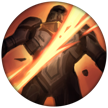

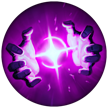

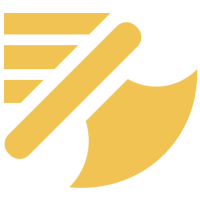


+10% Attack Speed
+9 Adaptive (5.4 AD or 9 AP)
+65 Base Health
Spells:

Barrier

Flash
Items
Threats & Synergies
 Threats
Threats
 Synergies
Synergies
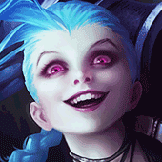 Show All
Show All
 Extreme Threats
Extreme Threats

 Ideal Synergies
Ideal Synergies

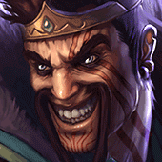
Draven
Do not trade with him early or go for poking him. Farm safely and freeze next to your tower to prevent him running you down.

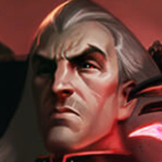
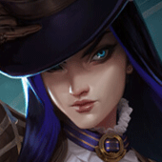
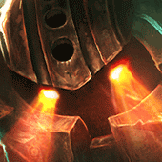
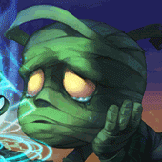
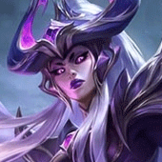
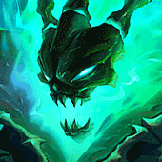
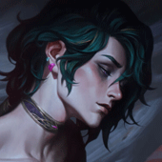
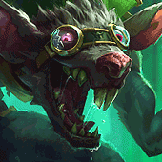
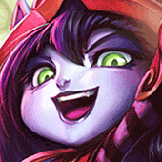
Lulu
Lulu is an ideal support for Jinx, offering a shield that not only protects her but also boosts her damage. Her W (Whimsy) provides a movement speed buff to help Jinx kite or reposition, or she can use it to turn an enemy into a harmless critter, neutralizing their threat. Lulu's R (Wild Growth) can be a lifesaver, especially against dive champions like Kha'Zix or Zac, knocking them away and making Jinx harder to reach when timed correctly. Overall, Lulu offers excellent utility and protection, making her a strong pick for Jinx.

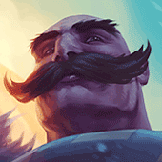
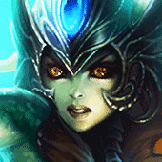
 Synergies
Synergies

Lulu
Lulu is an ideal support for Jinx, offering a shield that not only protects her but also boosts her damage. Her W (Whimsy) provides a movement speed buff to help Jinx kite or reposition, or she can use it to turn an enemy into a harmless critter, neutralizing their threat. Lulu's R (Wild Growth) can be a lifesaver, especially against dive champions like Kha'Zix or Zac, knocking them away and making Jinx harder to reach when timed correctly. Overall, Lulu offers excellent utility and protection, making her a strong pick for Jinx.



Champion Build Guide



- Pow-Pow (minigun): Gains bonus attack speed for 2.5 seconds, stacking up to 3 times. The first stack grants 30% bonus attack speed, with each additional stack granting 15% (for a total of 60% at 3 stacks). The stacks decay one at a time and refresh with basic attacks on-attack.
- Fishbones (rocket launcher): Jinx's basic attacks gain 75/100/125/150/175 bonus range, deal 110% AD to the main target, and splash 80/100/120/140/160% AD to all nearby enemies. Each attack consumes 16/17/18/19/20 mana.
 Get Excited!, which increases her attack and movement speed after takedowns. Lethal Tempo complements this by further increasing her attack speed, especially when switching between
Get Excited!, which increases her attack and movement speed after takedowns. Lethal Tempo complements this by further increasing her attack speed, especially when switching between
 Pow-Pow and
Pow-Pow and
 Fishbones. This allows her to maximize damage output with
Fishbones. This allows her to maximize damage output with
 Runaan’s Hurricane’s multi-target passive and synergizes with
Runaan’s Hurricane’s multi-target passive and synergizes with
 Infinity Edge’s crit damage.
Infinity Edge’s crit damage. Fishbones consumes mana with each attack, and
Fishbones consumes mana with each attack, and
 Zap! (W) can be mana-intensive in extended trades. Presence of Mind ensures she sustains her mana pool during team fights, enabling her to continuously cast abilities and maintain high DPS. This is particularly crucial during long skirmishes or late-game sieges.
Zap! (W) can be mana-intensive in extended trades. Presence of Mind ensures she sustains her mana pool during team fights, enabling her to continuously cast abilities and maintain high DPS. This is particularly crucial during long skirmishes or late-game sieges. Infinity Edge amplify her damage and allow her to heal for significant amounts in fights, making her harder to take down.
Infinity Edge amplify her damage and allow her to heal for significant amounts in fights, making her harder to take down. Fishbones splash damage. Cut Down further amplifies her DPS against targets with higher max health, letting her shred through tanks and bruisers efficiently, which pairs well with the armor penetration from
Fishbones splash damage. Cut Down further amplifies her DPS against targets with higher max health, letting her shred through tanks and bruisers efficiently, which pairs well with the armor penetration from
 Infinity Edge.
Infinity Edge. Fishbones allows her to maintain high health in fights, especially if she positions well behind her frontline. Absolute Focus gives bonus adaptive damage (AD or AP) when above 70% health, which scales her damage output during sieges or poking enemies from a safe distance.
Fishbones allows her to maintain high health in fights, especially if she positions well behind her frontline. Absolute Focus gives bonus adaptive damage (AD or AP) when above 70% health, which scales her damage output during sieges or poking enemies from a safe distance. Yun-Tal) and making her an unstoppable force in late-game fights.
Yun-Tal) and making her an unstoppable force in late-game fights. Opportunity, etc.). Cash Back helps mitigate the cost of these items by refunding gold when purchasing, allowing Jinx to reach her power spikes earlier.
Opportunity, etc.). Cash Back helps mitigate the cost of these items by refunding gold when purchasing, allowing Jinx to reach her power spikes earlier. Fishbones and later in team fights.
Fishbones and later in team fights.When to build: Against teams with tanky champions stacking armor. This item significantly increases your damage against high-health enemies.
When to build: Against enemies with heavy healing or sustain, such as Soraka, Vladimir, or Aatrox. The Grievous Wounds effect reduces their healing effectiveness.
When to build: When the enemy team has high burst damage or assassins like Zed, Talon, or Akali. The revive can give you a second chance in fights and make enemies hesitate to dive on you.
When to build: Against teams with heavy crowd control, such as Morgana, Leona, or Malzahar. The active can save you from fatal situations.
When to build: If you need extra sustain and survivability in extended fights. The shield and lifesteal are invaluable against poke-heavy teams.
When to build: If you need additional range for sieging turrets, poking enemies, or safely dealing damage to champions with high engage potential.
When to build: When facing heavy burst magic damage threats like Syndra or Leblanc. The shield can prevent instant deaths in team fights.
Strategy:
Ideal Outcome: Survive laning phase with minimal poke damage, maintaining a farm advantage and scaling for mid-game.
Strategy:
Ideal Outcome: Keep up in CS while avoiding traps and pressure. Look to fight post-laning phase with item parity.
Strategy:
Ideal Outcome: Maintain an even lane and scale into mid-game with more damage output. Look to engage once his
Strategy:
Ideal Outcome: Take short trades and focus on farming. Use your superior attack speed to scale into mid-game team fights.
Strategy:
Ideal Outcome: Stay even in farm and avoid isolation damage. Look for trades once you’ve hit a power spike.
Jinx vs. Miss Fortune
Strategy:
Ideal Outcome: Survive the early game without taking too much poke. Farm safely and look to outscale her in team fights.
Strategy:
Ideal Outcome: Farm evenly and avoid engaging unless you can punish her cooldowns. Outscale her in the mid-game.
Strategy:
Ideal Outcome: Survive the lane without feeding kills and maintain a farm deficit no greater than 10-15 CS. Focus on outscaling him in the mid to late game.
Strategy:
Ideal Outcome: Avoid dying early and focus on keeping up in farm. Outscale him in team fights with superior range and DPS.
Strategy:
Ideal Outcome: Keep her at arm's length and farm safely. Wait for mid-game where your superior range and DPS can take over.
Strategy:
Ideal Outcome: Keep a CS advantage early game and look to team fight where you can contribute more consistent DPS.
Strategy:
Ideal Outcome: Farm and trade effectively, preventing her from snowballing early. Outrange her in team fights to secure kills.
Strategy:
Ideal Outcome: Sustain through the lane phase and outscale him in team fights with better range and mobility.
Strategy:
Ideal Outcome: Avoid dying to his stealth ganks. Scale into mid-game where you can outdamage him in team fights.
Strategy:
Ideal Outcome: Snowball an early lead and end the game before he reaches full build.
Strategy:
Ideal Outcome: Scale safely and use your superior range to punish his immobility in team fights.
Strategy:
Ideal Outcome: Keep up in farm and wait for mid-game where your range and DPS outscale her in team fights.
In League of Legends, supports can be categorized into three main types that counter or are countered by each other, creating a dynamic "rock-paper-scissors" system. Here's how it works:
1. Engage Supports (Rock)
- Examples: Leona
 , Nautilus
, Nautilus
 , Alistar
, Alistar
 , Rakan
, Rakan

- Playstyle: Engage supports thrive on initiating fights and locking down enemies with crowd control (CC). They excel at diving in and catching squishy targets.
- Strengths: Strong against Enchanters who lack mobility or CC to stop them.
- Weaknesses: Weak against Poke/Disengage Supports who can kite and keep their distance.
2. Poke/Disengage Supports (Paper)
- Examples: Zyra
 , Karma
, Karma
 , Morgana
, Morgana
 , Janna
, Janna

- Playstyle: These supports excel at keeping enemies at bay through poke damage or disengaging with CC when enemies dive in.
- Strengths: Strong against Engage Supports who struggle to close the gap.
- Weaknesses: Weak against Enchanters who can sustain through poke and protect their ADCs.
3. Enchanters (Scissors)
- Examples: Soraka
 , Lulu
, Lulu
 , Yuumi
, Yuumi
 , Nami
, Nami

- Playstyle: Enchanters focus on healing, shielding, and empowering their ADCs to win trades or outlast opponents.
- Strengths: Strong against Poke/Disengage Supports who rely on poke damage.
- Weaknesses: Weak against Engage Supports who can lock them down before they can peel or sustain effectively.

Notes:
- The system is not absolute and depends on skill, team compositions, and game state.
- Some champions, like Thresh
 , blur the lines between categories, offering versatility.
, blur the lines between categories, offering versatility. - Adapt your playstyle based on the matchup to maximize your impact.
 with
with
 or
or
 : You can cancel the animation of
: You can cancel the animation of
 and
and
 by quickly switching between her minigun and rocket launcher. This lets you squeeze in basic attacks between abilities faster.
by quickly switching between her minigun and rocket launcher. This lets you squeeze in basic attacks between abilities faster.Fast Switching: Minimize downtime when switching by timing so you’re firing your next shot as soon as the
 animation ends.
animation ends.In League of Legends, the in-game map is measured using units. A unit refers to the basic measurement of distance within the game, with the common reference point being the size of a Teemo
 model. 100 units in the game is approximately the length of Teemo’s
model. 100 units in the game is approximately the length of Teemo’s
 character model. This means that, when measuring distances in the game, you can think of 100 units as being roughly the size of Teemo’s
character model. This means that, when measuring distances in the game, you can think of 100 units as being roughly the size of Teemo’s
 character.
character.
This image illustrates how long it takes for Jinx's Ultimate
 to reach a target after being fired. The numbers on the image represent the time it takes in seconds for the rocket to travel the distance from Jinx to the target, depending on how far away the target is. The graphic shows the speed and trajectory of the rocket, helping players gauge when to use the ultimate effectively for snipe kills or securing objectives, as the rocket travels a considerable distance at a consistent speed.
to reach a target after being fired. The numbers on the image represent the time it takes in seconds for the rocket to travel the distance from Jinx to the target, depending on how far away the target is. The graphic shows the speed and trajectory of the rocket, helping players gauge when to use the ultimate effectively for snipe kills or securing objectives, as the rocket travels a considerable distance at a consistent speed.

- Level 1-3: Last-hit only to avoid pushing the wave unless you want lane priority. Jinx’s long auto-attack range lets you poke the enemy without overcommitting.
- Push for Level 2 Advantage: If you have a strong level 2 support, push for level 2 to gain the upper hand; otherwise, farm safely for your first item.


- The earlier spawn of cannon minions (wave 4) means stronger early waves. Coordinate with your support to either push or hold the wave, depending on your strategy.
- Fast Push Tips:
- You can create fast pushes by maximizing wave power rather than just focusing on killing melee minions. The more wave power you have, the harder the push will be.
- Why Fast Push?: Fast pushing can deny enemy laners gold, create map presence, or secure vision and objectives.
- When to Fast Push:
- A: When the enemy laner is forced to base, allowing you to extend your lead.
- B: When your jungler is flanking and preparing to dive.
- C: When the enemy team is across the map, giving you an opportunity to pressure objectives or structures.
- D: When you need to obtain vision to prevent jungle ganks or set up for an objective.
- Remember, fast pushing is a tool that can be used in both laning phase and mid-game to secure advantages and force the enemy to respond to your pressure.
- Slow pushing in its simplest sense is killing the enemy caster minions. This results in the enemy minion wave doing less damage to your minion wave (which also means your minion wave does more damage to theirs) while allowing a large wave of yours to build up. This is because the pushing minion wave still requires a large amount of time to kill the “tank” melee minions.
- Wave Build-up: As with fast pushing, the term “slow” refers to the total time that the wave will reach the enemy turret. This means you will have turret pressure in a while or that the wave will push slowly.
- Applying Freezing Rules to Slow Pushing: The same rules that apply to freezing apply to slow pushing. If the wave lies in the yellow zone, you will need an additional two minions in order to slow push effectively (see below). If you have greater than four caster minions over the enemy, you will guarantee a push at any part of the lane.
- Wave Power and Slow Pushing: Remember, slow pushes can be created by more than just killing the caster minions; minion pushes are based on wave power rather than simply “killing the casters.” The more wave power you have, the harder the push will be.
- Strategic Uses of Slow Pushes: Slow pushes are often used for various strategic purposes, including:
- A: To set up a cross-map objective play.
- B: To deny massive amounts of experience and gold by threatening a jungle dive.
- C: To base, roam, or ward.
- D: To harass and siege structures.
See here a slow pushed wave setting up a tower dive with jungler.
- A: To set up a cross-map objective play.
- Why Slow Push Over Fast Push?: Slow pushing is often favored because it creates better objective plays, denies large minion waves, and generates more map pressure. It frequently results in applying lane pressure, allowing your team room to maneuver, set up wards, or make plays on objectives.
- Pressure Window: It’s important to capitalize on the pressure created by a slow push quickly, as the window typically doesn’t last long.
- Beyond Laning Phase: Most of the time beyond the laning phase, you will use a slow push for securing an objective as well as giving yourself a wave to siege the enemy's base.
- Post-Laning Phase Slow Pushing: When slow pushing in a side lane, this is usually done after the laning phase. However, slow pushing during the laning phase can be used to win certain matchups, particularly in ranged vs melee matchups where the melee champion overextends and cannot dive into large minion waves.
- Slow Pushing for High Creep Score: Slow pushes are also how you obtain a high creep score. When you slow push into an enemy turret, the wave will bounce and, in turn, slow push for the enemy team. This means that you will be able to collect a large amount of minions in a short amount of time while improving your creep score.

- Why Freeze?: Freezing keeps the wave near your turret, allowing you to farm safely and deny the enemy gold and experience.
- When to Freeze: Freeze when you’re behind, your jungler wants to gank, or you want to minimize risk while farming. You should also freeze if you don't have any summoners up. This will help you avoid being ganked or getting all-inned from the enemy bot lane.
- When NOT to Freeze: Avoid freezing when your team needs lane pressure, you’re ahead and want to harass, or the enemy can clear waves easily and break the freeze.


- Given the increased damage minions deal to champions, be cautious when engaging in trades near large enemy minion waves, as they can significantly impact the skirmish outcome.
- Burst Down Low-Health Targets: Use your ultimate to finish low-health enemies from a distance, activating
 Get Excited! for a speed and attack boost.
Get Excited! for a speed and attack boost. - Get Excited! Chain: Look to burst down one target to activate
 and chain resets for high-impact fights.
and chain resets for high-impact fights. - Zap! and Flame Chompers! for Self-Peel: Save
 and flame-chompers! to control or peel threats that dive you.
and flame-chompers! to control or peel threats that dive you. - Zoning with Chompers: Use
 chompers to zone enemies off objectives or paths, trapping opponents or securing your escape.
chompers to zone enemies off objectives or paths, trapping opponents or securing your escape. - Ultimate Sniping: Look for opportunities to snipe low-health enemies with
 for kills, assists, or control over objectives.
for kills, assists, or control over objectives. - Use Pow Pow!Pow Pow! for Neutral Objectives: Switch to the minigun when taking Dragon or Baron to maximize DPS.
• When to Rotate: After taking the bot lane tower or if the enemy ADC rotates top or mid.
• Why: Taking the first turret opens up the map. Rotating to mid lets you use your wave clear and range to pressure mid and set up objectives like
 or
or
 .
. • How: Push the bot wave, set vision, and rotate mid with your
 and
and
 ready to disengage if needed.
ready to disengage if needed.2. Objective Control
• When to Rotate: Prioritize objectives when your team has lane priority.
• Why: Jinx's
 is excellent for executing objectives and securing fights.
is excellent for executing objectives and securing fights.• How: Coordinate with your team, ensure vision around objectives, and use your range to DPS from a safe position.
3. Team Fights
• When to Rotate: Rotate if your wave is safe and a fight is imminent.
• Why: Jinx excels in grouped fights with her
 passive, allowing you to clean up fights and snowball.
passive, allowing you to clean up fights and snowball.• When your support roams, focus on farming under turret or maintaining a safe position.
• Use
 and
and
 (rocket form) to farm from range.
(rocket form) to farm from range.2. Ward and Stay Alert
• Use
 or
or
 for vision.
for vision.• Track the enemy jungler's position and avoid pushing unless you have information on the map.
3. Call for Backup
• If the enemy engages while your support is roaming, ping for assistance from your jungler or mid-laner.
• When You Have Vision: Roaming is safer when the river and jungle are warded.
• To Secure Objectives: Supports often roam to assist with objectives like
 or
or
 . During this time, focus on pushing the wave.
. During this time, focus on pushing the wave.- Communicate: Use pings to indicate your intentions or warn your team of potential threats.
- Stay Alive: Avoid unnecessary risks—your late-game potential as Jinx is crucial.
- Adapt to Enemy Composition: Against heavy engage, always rotate with vision and peeling in mind.
- Follow Tempo: Match your team's mid-game pace and play around power spikes from Collector, Yun Tal, Infinity Edge, etc.










 105,527
105,527
 5
5







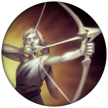






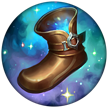








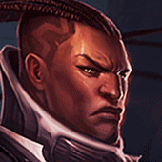
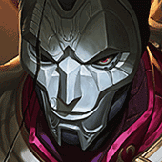
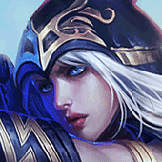
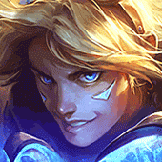
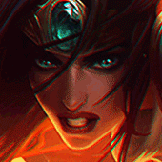
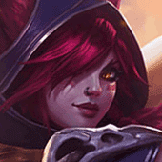
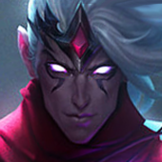
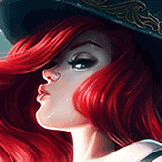
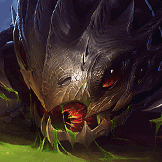

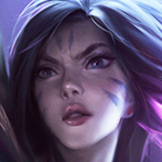
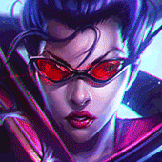
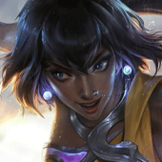
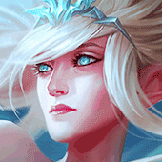
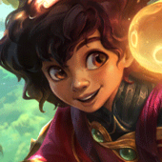
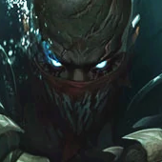
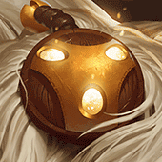
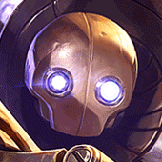
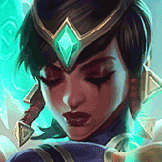

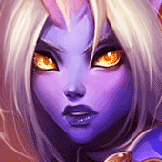
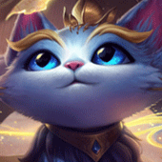

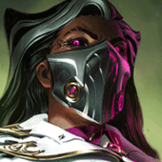

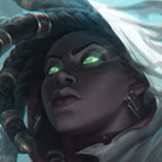
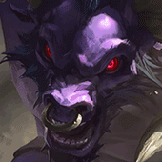









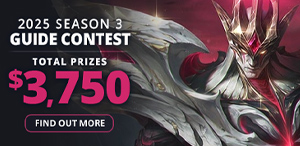
 Twitch
Twitch

You must be logged in to comment. Please login or register.